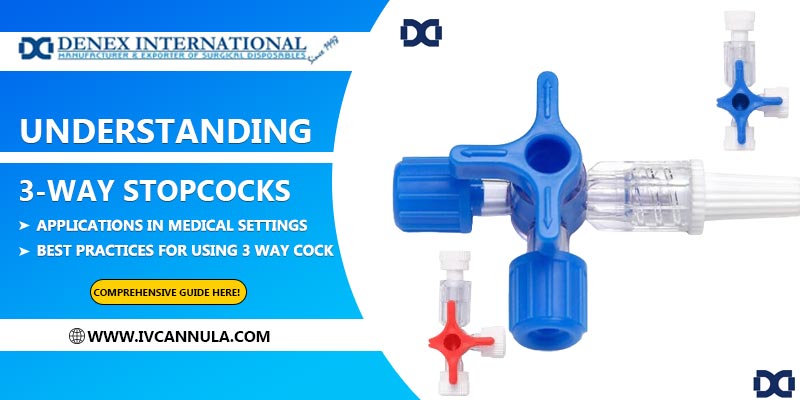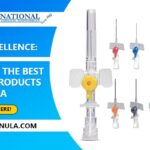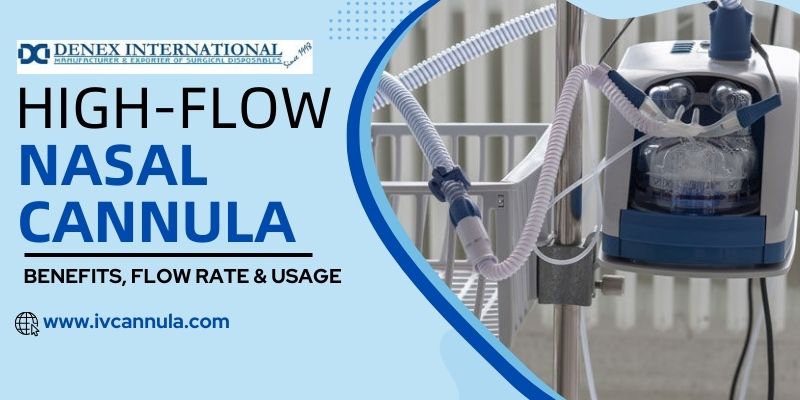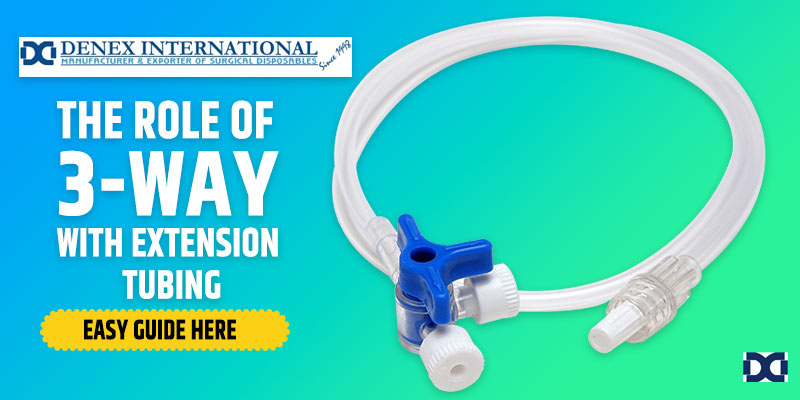In the intricate realm of medical devices, the 3-way stopcock stands out as a crucial component in various medical procedures. From controlling the flow of fluids to facilitating efficient patient care, understanding the functionality and applications of 3-way stopcocks is paramount for healthcare professionals. This comprehensive guide aims to unravel the intricacies of 3-way stopcocks, shedding light on their design, applications, and best practices for optimal use.
Anatomy of a 3-Way Stopcock:
A 3-way stopcock is a small, valve-like device that typically consists of a rotating handle and three ports. The ports are labeled as ‘I,’ ‘O’, and ‘II,’ representing the input, output, and side port, respectively. The device is commonly made of transparent or translucent materials, allowing for easy visualization of fluid flow.
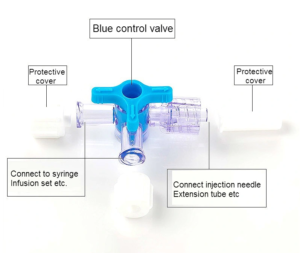
Rotating Handle: The central component of the 3-way stopcock, the rotating handle, is responsible for directing the flow of fluids between the ports. Its design allows for precise control, enabling healthcare professionals to manage fluid administration or withdrawal with accuracy.
Ports: The three ports serve distinct purposes. The input port (I) is where the fluid enters, the output port (O) is where it exits, and the side port (II) is an additional opening that allows for secondary connections or the attachment of monitoring devices.
Applications in Medical Settings:
1. Intravenous (IV) Therapy:
3-way stopcocks play a pivotal role in IV therapy, providing a means to administer multiple medications or fluids through a single access point. The rotating handle allows for swift and controlled switching between different infusions, reducing the need for multiple punctures.
2. Blood Transfusions:
In blood transfusions, 3-way stopcocks enable the healthcare professional to seamlessly switch between various blood components, ensuring a smooth and continuous flow without the need for multiple setups.
3. Arterial Blood Gas Sampling:
For arterial blood gas sampling, the side port of the 3-way stopcock can be utilized to connect to a syringe, simplifying the process of drawing arterial blood samples for analysis.
Read Also: Where to Find the Best IV Cannula Products in India
The Profound Advantages of 3-Way Stopcocks in Medical Settings
In the intricate world of medical devices, the 3-way stopcock emerges as a silent hero, offering a myriad of advantages that redefine fluid control in healthcare settings. Let’s delve into the profound benefits that make 3-way stopcocks indispensable in modern medical practices.
Streamlined Fluid Management:
The primary advantage lies in the streamlined management of multiple fluid lines. With three ports allowing for simultaneous connections, healthcare professionals can administer different medications, fluids, or solutions without the need for additional devices. This not only simplifies the process but also minimizes the risk of contamination or errors associated with multiple access points.
Real-Time Control and Adaptability:
One of the standout features of 3-way stopcocks is their ability to provide real-time control over fluid pathways. The rotating handle allows healthcare practitioners to swiftly adjust the direction of fluid flow, enabling instant adaptations during medical procedures. This level of control is critical in situations where precise fluid management is paramount.
Versatility in Medical Procedures:
The versatility of 3-way stopcocks extends across a spectrum of medical procedures. From intravenous therapy and blood transfusions to critical interventions requiring the administration of multiple medications, these valves adapt seamlessly to diverse healthcare scenarios. Their flexibility enhances the efficiency of medical professionals, offering a single solution for various fluid management needs.
Reduced Need for Additional Devices:
By consolidating multiple functions into a single device, 3-way stopcocks contribute to a more efficient and clutter-free medical environment. This not only simplifies the workflow for healthcare professionals but also reduces the risk of potential complications associated with using multiple devices simultaneously.
Enhanced Patient Safety:
The precision and control offered by 3-way stopcocks directly contribute to enhanced patient safety. Accurate fluid management minimizes the chances of medication errors, ensures the timely delivery of treatments, and reduces the overall risk of complications associated with fluid mismanagement.
Cost-Effectiveness in Medical Practices:
Incorporating 3-way stopcocks into medical procedures can lead to cost savings. The consolidation of functions into a single device reduces the need for additional equipment, streamlining inventory management. This, coupled with the versatility and durability of 3-way stopcocks, makes them a cost-effective solution for healthcare facilities.
Best Practices for Using 3-Way Stopcocks:
Proper Priming: Before use, ensure that the 3-way stopcock is properly primed to remove any air bubbles, preventing air embolisms during fluid administration.
Labeling and Documentation: Clearly label the ports and document the medications or fluids connected to each port to avoid confusion and enhance patient safety.
Regular Inspections: Periodically inspect 3-way stopcocks for any signs of damage or wear. Replace any devices that show signs of deterioration to maintain functionality and prevent leaks.
Training and Education: Healthcare professionals should receive proper training on the correct usage of 3-way stopcocks to maximize their benefits and minimize the risk of errors.
Read Also: A Step-by-Step Guide on How to Insert IV Cannula with Ease
Common Complications of 3-Way Stopcocks in Medical Settings
While 3-way stopcocks are indispensable tools in fluid management during medical procedures, it’s essential to be aware of potential complications that may arise. In this exploration, we delve into the common challenges associated with 3-way stopcocks, shedding light on how healthcare professionals can navigate these complexities for optimal patient care.
1. Fluid Leakage and Cross-Contamination:
A notable complication involves the potential for fluid leakage and cross-contamination. Improper sealing or wear and tear of the stopcock’s components may lead to unintended fluid escape, compromising the sterility of the procedure and increasing the risk of contamination.
2. Difficulty in Turning:
Over time, the rotating handle of a 3-way stopcock may encounter resistance or difficulty in turning. This can hinder the smooth operation of the valve, impeding the healthcare professional’s ability to make timely adjustments during critical medical procedures.
3. Incompatibility with Medications:
Certain medications or solutions may have adverse effects on the materials used in the construction of 3-way stopcocks. Incompatibility issues can lead to degradation of the valve components, compromising its functionality and potentially affecting patient safety.
4. Blockage and Obstruction:
The intricate pathways within a 3-way stopcock can be susceptible to blockage or obstruction. Residual substances from previous use, such as blood clots or medication residues, may accumulate, impeding the smooth flow of fluids and reducing the effectiveness of the valve.
5. Sterility Breakdown:
Maintaining sterility is paramount in medical settings, and any breach can pose a significant risk. Complications may arise if the 3-way stopcock is not adequately sterilized before use or if the sterile barrier is compromised during the procedure.
6. Misalignment of Ports:
The correct alignment of the three ports – inlet, outlet, and side port – is crucial for proper functionality. Any misalignment may result in inaccurate fluid control, potentially leading to medication errors or inadequate treatment delivery.
7. Material Deterioration:
The materials used in the construction of 3-way stopcocks may deteriorate over time due to factors such as exposure to certain chemicals or repeated sterilization processes. Material degradation can compromise the structural integrity of the valve and impact its longevity.
8. Limited Durability in High-Pressure Scenarios:
In situations where high pressure is involved, such as rapid infusions, 3-way stopcocks may face durability challenges. The stress on the valve components under high-pressure conditions can contribute to wear and tear, reducing the overall lifespan of the device.
Navigating Challenges for Enhanced Patient Care:
Awareness of these common complications empowers healthcare professionals to implement preventive measures, conduct regular maintenance, and choose high-quality 3-way stopcocks. As these challenges are addressed, the reliability and effectiveness of 3-way stopcocks in medical procedures can be maximized, ensuring optimal patient care and safety.
Denex International: Elevating Quality in 3-Way Stopcocks
As a reputable 3-way stopcock manufacturer, Denex International takes pride in engineering devices that meet and exceed stringent quality standards. Our 3-way stopcocks are crafted with precision, ensuring reliability, durability, and optimal performance in diverse medical applications.
Why Choose Denex International for Unparalleled Quality in 3-Way Stopcocks
In the realm of medical devices, the choice of a reliable and high-quality 3-way stopcock is paramount to the success of medical procedures. Denex International emerges as a standout choice, setting new benchmarks in the industry. Let’s delve into the unique factors that make Denex International the preferred partner for those seeking excellence in 3-way stopcocks.
1. Precision Engineering for Unmatched Reliability:
Denex International takes pride in its commitment to precision engineering. Our 3-way stopcocks are meticulously crafted with attention to detail, ensuring seamless functionality, durability, and unmatched reliability. Each component undergoes stringent quality checks, guaranteeing performance excellence in diverse medical applications.
2. Stringent Quality Control Measures:
Quality is non-negotiable at Denex International. Our manufacturing processes adhere to the highest international standards, and each 3-way stopcock undergoes rigorous quality control measures. From material selection to final product inspection, our commitment to excellence ensures that every device meets and exceeds industry benchmarks.
3. Innovative Materials for Enhanced Performance:
Denex International stands at the forefront of innovation. We leverage cutting-edge materials in the construction of our 3-way stopcocks, ensuring compatibility with a wide range of medical fluids and optimal performance in various healthcare scenarios. Our commitment to using advanced materials reflects our dedication to pushing the boundaries of quality and functionality.
4. Customized Solutions to Meet Diverse Needs:
Understanding the diverse needs of the healthcare industry, Denex International offers customized solutions. Whether it’s specific design requirements, material preferences, or unique specifications, our team collaborates closely with clients to deliver tailor-made 3-way stopcocks that align seamlessly with their applications.
5. Adherence to Global Standards and Regulations:
Denex International prioritizes patient safety. Our 3-way stopcocks comply with rigorous global standards and regulations governing medical devices. This commitment ensures that healthcare professionals can trust Denex International devices to meet the highest safety and performance criteria in every medical setting.
6. Continuous Innovation and Research:
At Denex International, we believe in staying ahead of the curve. Our dedication to continuous innovation and research ensures that our 3-way stopcocks incorporate the latest advancements in medical technology. By pushing boundaries and embracing innovation, we empower healthcare professionals with state-of-the-art devices that enhance patient care.
7. Global Recognition and Trust:
Denex International has earned global recognition for its unwavering commitment to quality. Our 3-way stopcocks are trusted by healthcare professionals worldwide, attesting to the reliability and performance of our devices in diverse healthcare settings.
Conclusion:
In conclusion, a thorough understanding of 3-way stopcocks is indispensable for healthcare practitioners navigating the intricacies of medical procedures. From their anatomical features to diverse applications, the 3-way stopcock stands as a versatile tool in the medical toolkit. By adhering to best practices and fostering a comprehensive knowledge of their functionality, healthcare professionals can ensure the seamless and safe integration of 3-way stopcocks into various medical interventions, ultimately improving patient care.

